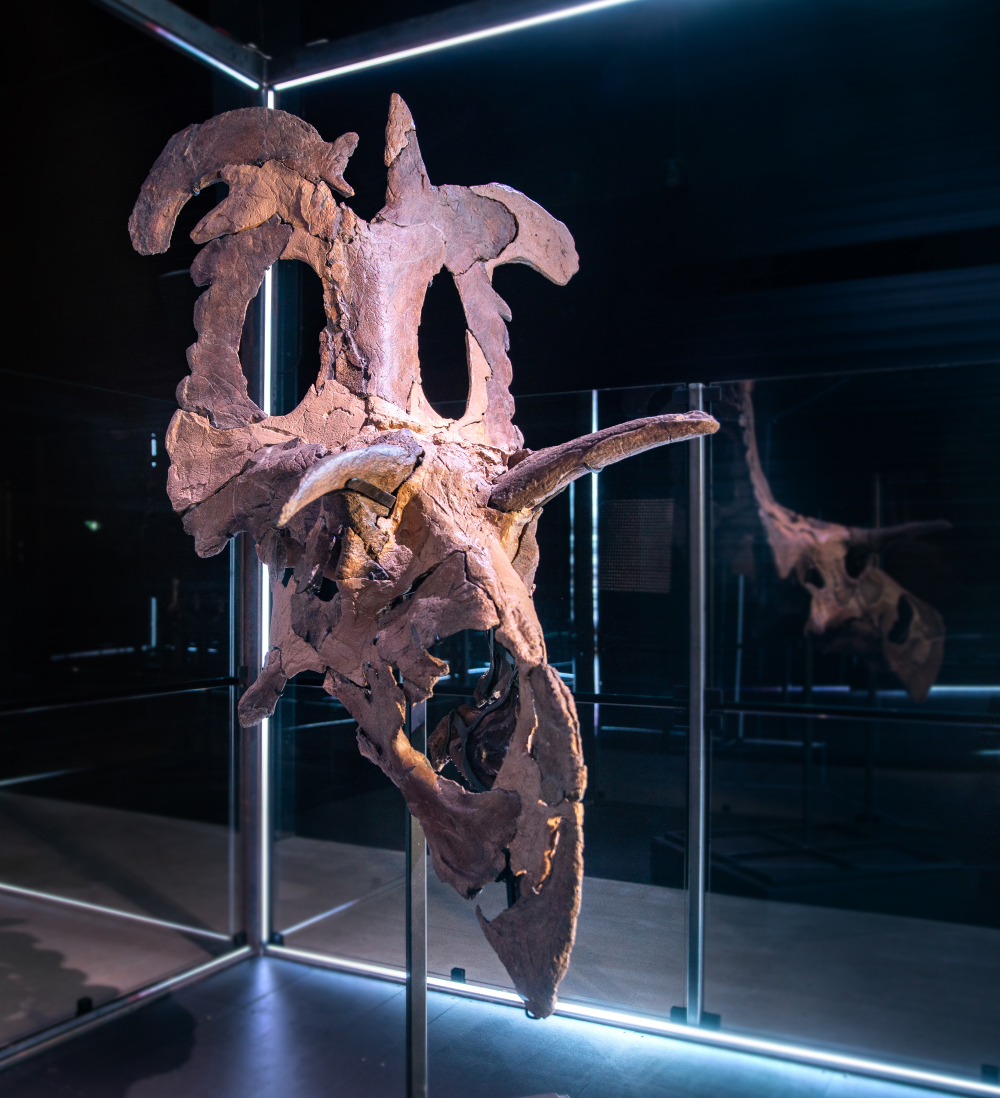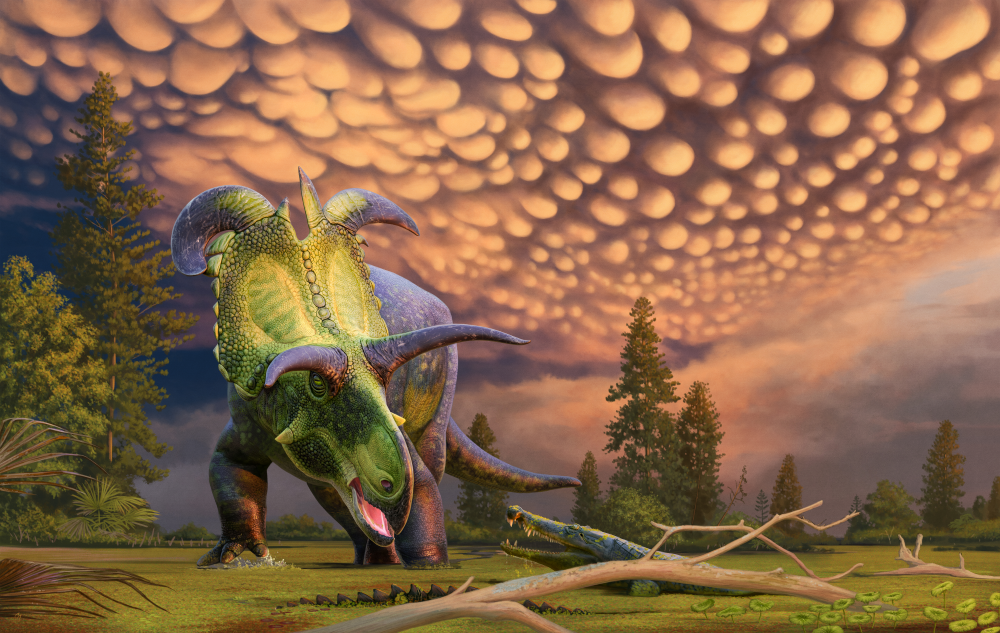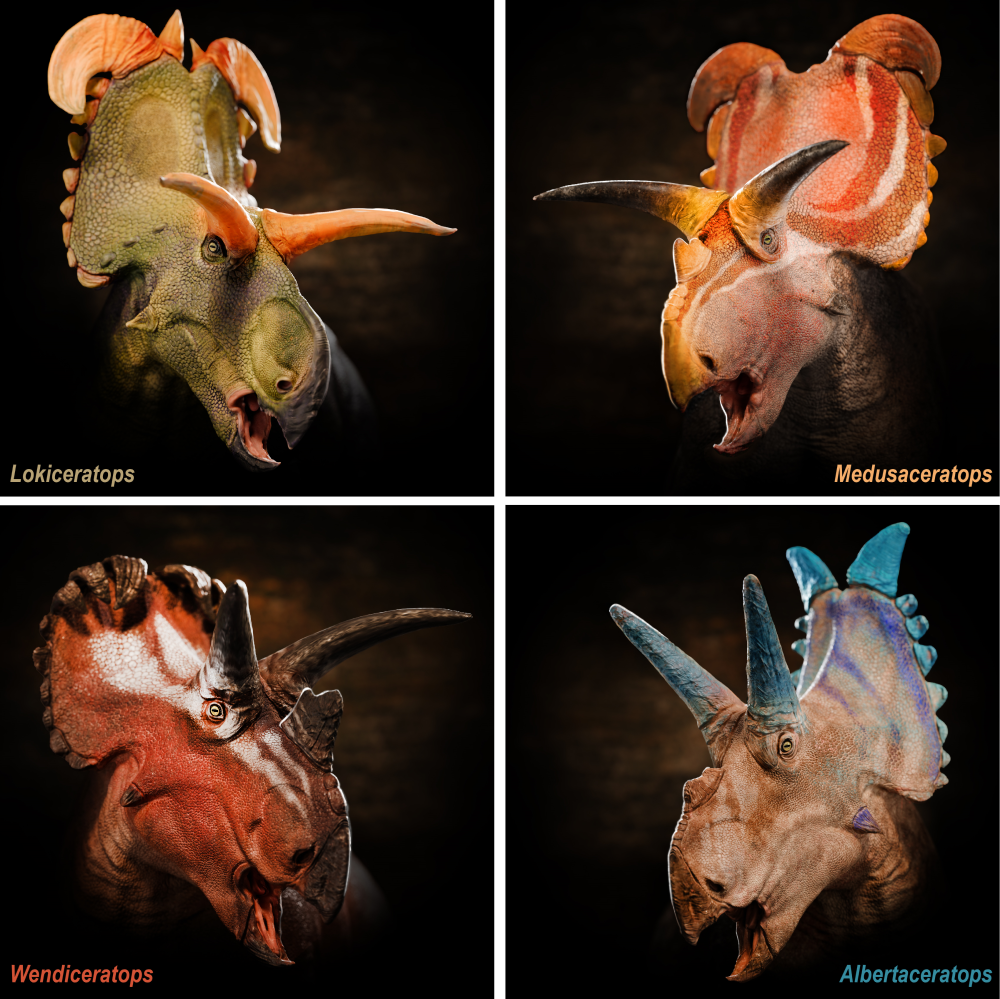Palaeontologists have struck giant new dinosaur gold with the discovery of Lokiceratops, an ornate beast that was approximately 22 feet (6.7 meters) long, weighed around 11,000 pounds (5 metric tonnes), and had a seriously fancy hat. It belonged to a group of vegetarian dinosaurs known as the “centrosaurines,” and dates back 78 million years.
A spectacular dinosaur and one that’s been given a spectacular name, the new species has been crowned Lokiceratops rangiformis, meaning “Loki’s horned face that looks like a caribou.” It’s a hat tip to the Norse god Loki and his horned helmet, and the differing horn lengths of each side of its frill that are asymmetric, much like the antlers of a caribou.
It sits within a group of horned dinosaurs known as ceratopsids that first evolved around 92 million years ago during the Late Cretaceous. We know that the group gave rise to several species of ornately decorated dinosaurs, but this discovery is shining a light on the previously unrecognized diversity of these animals.

Fossil skull bones of Lokiceratops reconstructed and displayed at the Museum of Evolution in Maribo, Denmark.
Image credit: Museum of Evolution
“A new horned dinosaur found in the Cretaceous badlands of northern Montana reveals unexpectedly high diversity, suggesting elevated speciation rates and regional endemism in members of the group,” said study co-lead Dr Mark Loewen, a professor and lecturer at the University of Utah, to IFLScience.
“Lokiceratops rangiformis is the fourth centrosaurine, and fifth horned dinosaur overall, from a single fauna, and is closely related to two of the other animals it lived alongside. Fossils from this region along the US-Canada border suggest horned dinosaurs were living, and evolving, in a small geographic area. The high endemism seen in centrosaurines implies that dinosaur diversity is presently underestimated and contrasts with the large (historic) geographic ranges seen in most large mammals today.”

Reconstruction of Lokiceratops surprised by a crocodilian in the 78-million-year-old swamps of northern Montana, USA.
Image credit: ©Andrey Atuchin for the Museum of Evolution in Maribo, Denmark
“In addition to being one of the largest and most ornately decorated horned dinosaurs ever discovered, Lokiceratops also reveals an unexpectedly high level of richness in a Laramidia ecosystem,” added co-lead Dr Joseph Sertich, Affiliate Professor, Department of Geosciences, Colorado State University.
It must have been so impressive to potential mates that it really was worth having such a huge head!
Dr Mark Loewen
“Even more surprising, three of the five horned dinosaurs that lived in this ecosystem are close relatives, revealing a surprising pattern of rapid, regionally restricted evolution in the centrosaurine group of horned dinosaurs, a pattern similar to birds and other animals that use display features.”
Its headgear is weird even by ceratopsian standards, being one of the largest frill horns ever seen among this group of dinosaurs. Beyond being very fabulous, these ornaments provide a lot of information on the diversity of horned dinosaurs, helping us to build a more complete picture of the species richness of Cretaceous ecosystems. That said, carting it around wouldn’t have been easy.

Portrait reconstructions of all four centrosaurine dinosaurs that lived together in the Kennedy Coulee Assemblage of northern Montana and southern Alberta.
Image credit: Fabrizio Lavezzi © Evolutionsmuseet, Knuthenborg
“Having a giant head like Lokiceratops required massive neck muscles to balance it on the body and lots of calories to grow as the animal matured,” continued Loewen. “At the same time, it must have been so impressive to potential mates that it really was worth having such a huge head!”
Lokiceratops was the biggest horned dinosaur of its time, but remarkably it was one of five living together at the same time. It had been previously thought that no more than two species of horned dinosaurs could coexist, but Lokiceratops’ big head has blown that theory out of the water.
The prehistoric behemoth is also unique in that it didn’t possess a nose horn, but what it lacked on the snoot it made up for on its frill, which was packing the two blade-like horns that inspired its name. The groundbreaking specimen was excavated from the badlands of northern Montana, and will go on display at the Natural History Museum of Utah, so you can see one of the largest and most ornate dinosaurs ever found for yourself.
The study is published in PeerJ.
Source Link: Get A Load Of The Fancy Headgear On This New 78-Million-Year-Old Dinosaur